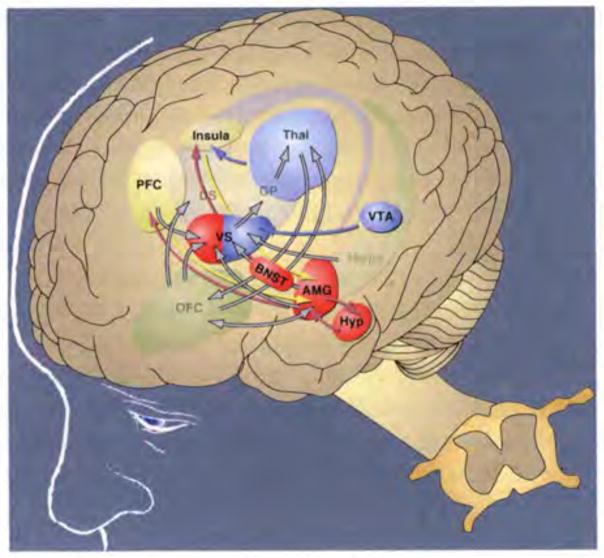Fig. 3.
Pathways for key elements of addiction circuitry implicated in negative emotional states. Addiction circuitry is composed of structures involved in the three stages of the addiction cycle: binge/intoxication (ventral striatum, dorsal striatum and thalamus), withdrawal/negative affect (ventral striatum, bed nucleus of the stria terminalis and central nucleus of the amygdala), preoccupation/anticipation (prefrontal cortex, orbitofrontal cortex and hippocampus). Highlighted here for the withdrawal/negative affect stage is increased activity in the extended amygdala and decreased activity in the reward system, illustrated with the use of imaging colors (i.e., red for high activity and blue for low activity). Modified with permission from Blackburn-Munro and Blackburn-Munro (2003) and Koob et al. (2008). AMG, amygdala; BNST, bed nucleus of the stria terminalis; DS, dorsal striatum; GP, globus pallidus; Hippo, hippocampus; Hyp, hypothalamus; Insula, insular cortex; OFC, orbitofrontal cortex; PFC, prefrontal cortex; Thal, thalamus; VS, ventral striatum; and VTA, ventral tegmental area. [Modified with permission from Zald and Kim 2001]

